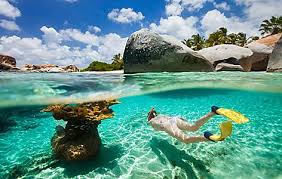rainforests
Explore Orinoco and the Caribbean with Le Dumont-D’urville mega yacht
 Features of the expedition:
Features of the expedition:
UNESCO World Heritage Sites: St. Lucia Island and Bridgetown Historic Center
Meeting with the Varao tribe, whose name translates as “people of boats”
An incredible variety of endemic wildlife, including macaws, toucans, scarlet ibuses, caimans, iguanas and dolphins
Visit Tobago Cays Marine Park with its amazing underwater life
The opportunity to spend the whole day in the Canaima National Park and fly around the world’s tallest Angel Falls Continue reading
Tortola Islands
 Among the British Virgin Islands, Tortola is the largest and most interesting tourist destination. He managed to preserve his natural splendor and rich cultural heritage; each of his cities is characterized by a unique atmosphere of hospitality and national color. Many travelers are primarily interested in the magnificent beaches, Tortola and ecotourism fans are attracted. Fans of fascinating excursions will not have to be bored either; there are literally attractions in every city.
Among the British Virgin Islands, Tortola is the largest and most interesting tourist destination. He managed to preserve his natural splendor and rich cultural heritage; each of his cities is characterized by a unique atmosphere of hospitality and national color. Many travelers are primarily interested in the magnificent beaches, Tortola and ecotourism fans are attracted. Fans of fascinating excursions will not have to be bored either; there are literally attractions in every city.
Tortola Island Cultural Tours – What to Visit
Tortola has a rather rich past. The island was inhabited as early as the 1st century AD by Arawaks, who lived quietly here until the beginning of the 15th century. Then they were first conquered by the Caribbean, very aggressive … Continue reading
Attractions of the island of St. John
 Located in the Caribbean Sea, the marvelous islet of St. John is part of the United States of America, or rather – owned by the United States Virgin Islands. St. John is both the smallest in the group and the richest. The constant number of inhabitants here does not exceed five thousand, while more than half live in the largest town – Cruz Bay. The island of St. John attracts travelers (and sometimes even stars of television screens and cinema) with its remoteness from civilization and the lack of amenities – a kind of savage vacation in the Caribbean.
Located in the Caribbean Sea, the marvelous islet of St. John is part of the United States of America, or rather – owned by the United States Virgin Islands. St. John is both the smallest in the group and the richest. The constant number of inhabitants here does not exceed five thousand, while more than half live in the largest town – Cruz Bay. The island of St. John attracts travelers (and sometimes even stars of television screens and cinema) with its remoteness from civilization and the lack of amenities – a kind of savage vacation in the Caribbean.
Around the beginning of the third century AD, Arawaki arrived in St. John – by water, naturally – from present-day Colombia and Venezuela. More militant Caribs drove out peaceful Arawaks – this happened at the beginning of the fourteenth century. The first European on St. John was Christopher Columbus – this journey was the second sailor’s account, and it took place at the very end of the fifteenth century. Continue reading



